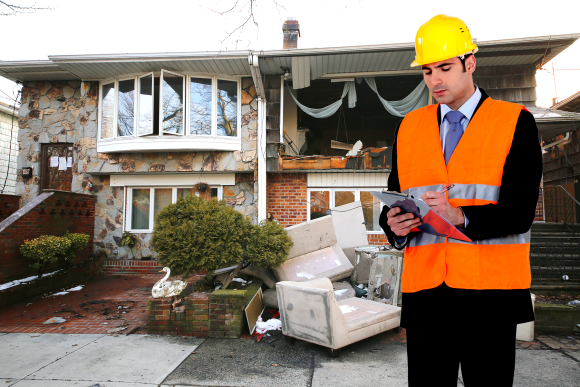Typically, there’s not much warning when a disaster strikes. No one knows the “when,” “where” and “how severe” of the next big weather event. Yet catastrophes include more than just what Mother Nature dishes out, such as tragedies like the 9/11 attacks. This is why agencies must be proactive in addressing the issues that will minimize the potential for the agency to face errors-and-omissions litigation when disaster strikes its community. If your agency waits until the event appears in the news, it’s too late.
What the File Says
If an agency knew the “when” and “where,” it is likely the agency would do whatever is necessary to prepare customers for the potential exposure and make every effort to ensure customers are covered. Unfortunately, this is not how life works. Because we are largely dealing with the unknown, it is virtually impossible to know which customer files will be affected when a disaster occurs.
Suppose a disaster struck your community and some of the files you personally handled came into play. What would those files say about you and the job you did? It is important for every agency staffer to realize that when a customer suffers a loss that is not covered, the potential for some form of E&O litigation to develop is raised. When that happens, the agency will be asked to provide a complete copy of the specific customer file to which the claim pertains. This includes all correspondence such as emails, faxes, letters, insurance proposals, etc. This material is discoverable and admissible, and will now find its way to the attorney representing your agency and the attorney representing the party suing the agency.
Back to the key question: If the file in question is one you personally handled, what will that file say about you and your performance?
- Will it say you were a consummate professional who documented all communication timely and professionally?
- Will it reflect the precision and detail with which you approach your responsibilities?
- Will it include documentation back to the customer detailing the conversation to ensure there were no misunderstandings?
- Will it say you are organized, with everything in its proper place, allowing a fellow team member to pick up that file and know exactly what has been done and what items are still open and unresolved?
- Will it reflect that policies were reviewed for accuracy when they were received?
If the answers to these questions are “yes,” pat yourself on the back. This type of file is paradise for the defense counsel assigned to your agency by the E&O carrier and should bode well for your agency as the E&O claim develops.
If the file does not speak highly of you, there is now a greater potential in the event of E&O litigation that your agency will not prevail. To a large degree, what’s done is done. While it may not be realistic to go back and upgrade the quality of the files you worked on last month or last year, today is a new day and a great time to commit to making the necessary changes to ensure a quality file.
How to Enhance the Agency’s Defense
Documentation. This is a crucial element in an E&O matter. Is the documentation of high quality, entered promptly and sufficiently detailed? If the answer is “yes,” this should help in your agency’s defense. If the answer is “no,” you could be in trouble. The goal is to ensure that your file documentation helps, not hurts, you.
Exposure analysis. This can be done via an annual survey questionnaire asking the customer to advise you of any changes in his or her life and the mention of other coverages he or she should consider. This shows that the agency made an effort to educate the customer about other coverages.
If the client never responded to the questionnaire, your effort will still positively position the agency.
Sign-off on declined coverages. If coverages were discussed and the customer chose not to pursue them, there should be evidence of the declination. This can be through written communication from the customer or, if the conversation is verbal, the agency should send the customer correspondence that memorializes the verbal conversation.
Proposals. Most insurance professionals look at proposals as one of the primary tools that will determine whether they land the account and, in actuality, proposals do play this role. In addition, a quality insurance proposal can also provide some solid E&O benefits.
Typically, insurance proposals are broken down by line of business and list the coverages offered/proposed with the corresponding premium. They probably use abbreviations or phrases such as “ACV” or “RC,” “co-insurance,” or “time element” or “business interruption coverage.” Look for your proposals to educate your prospects and help them understand their insurance program. They may know their business, but do they really know the finer points of the insurance business? Educating customers and prospects has shown to be a vital to minimizing E&O claims activity.
When disaster strikes, your files will “tell a story.” Make the necessary effort today to ensure that the story is a positive one.
Was this article valuable?
Here are more articles you may enjoy.



 Suit Against OpenAI and Microsoft Blames ChatGPT for Murder-Suicide
Suit Against OpenAI and Microsoft Blames ChatGPT for Murder-Suicide  Florida Jury Returns $779M Verdict for Family of Security Guard Killed at Gambling Cafe
Florida Jury Returns $779M Verdict for Family of Security Guard Killed at Gambling Cafe  What to Expect in 2026: US P/C Results More Like 2024
What to Expect in 2026: US P/C Results More Like 2024  Death at Universal’s Orlando Resort Roller Coaster Ruled Accidental
Death at Universal’s Orlando Resort Roller Coaster Ruled Accidental 



